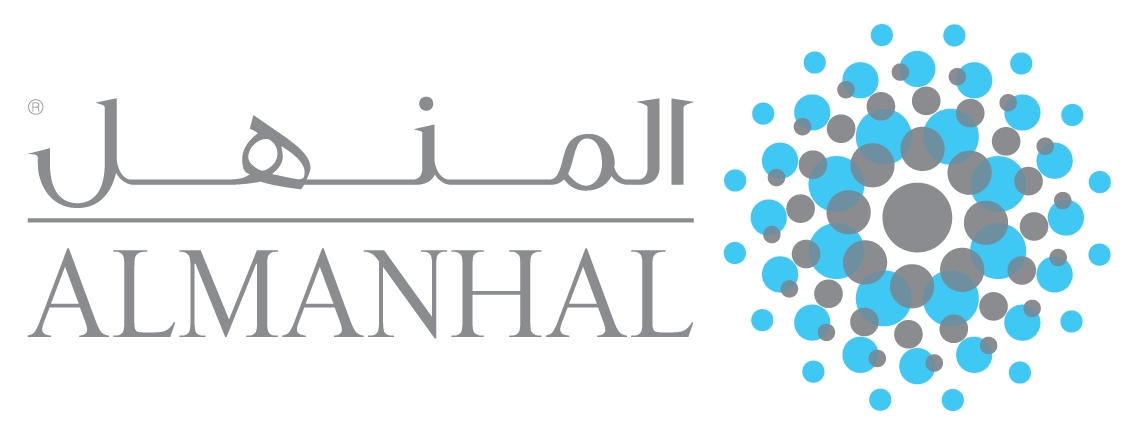Further Evidence on the Stability of Islamic versus Conventional Banks in selected GCC countries from 1999 to 2015
DOI:
https://doi.org/10.31436/jif.v6i0.254Keywords:
Bank stability, z-score, Islamic bank, conventional bank, financial crisis.Abstract
Based on the theory of financial intermediation from both the perspective of original theory and the Islamic perspective, this paper aims to investigate the level of stability of the Islamic and the conventional banks. It also examines the different timing effects including the period of crisis on the stability of the Islamic and the conventional banks. The study evaluates 51 conventional banks and 50 Islamic banks in selected Gulf Cooperation Council (GCC) using data from the Bankscope database over the period of 1999 to 2015. The study employs two-sample t-test with unequal variance t-test and the non-parametric Wilcoxon test and Mann-Whitney test to compare i) mean of Islamic versus conventional banks over different timing period ii) mean of tested period versus other periods for each of the Islamic and conventional banks. The study suggests that the GCC Islamic banks are more stable compared to their conventional counterparts. However, in testing different timing period, only GCC conventional banks seem to be affected by the crisis period while Islamic banks are less prone to the crisis.. Findings of this study contribute to the literature and fill the gap towards extending the theory of financial intermediation through empirical works of investigating the stability of the Islamic and the conventional banks.
Downloads
References
Adel, A. (2010). Global financial crisis: an Islamic finance perspective. International Journal of Islamic and Middle Eastern Finance and Management, 3(4), 306–320.
AlKulaib, Y.A., AlMudhaf, F.W. & Al-Jassar, S.A. (2013). The banking industry during an extended financial crisis: an empirical asessment of Kuwait banks. Academy of Banking Studies Journal, Vol. 12(1), 61–73.
Altaee, P.D.H.H.A., Talo, I.M.A. & Mustafa, H.M, A.P. (2013). Testing the Financial Stability of Banks in GCC Countries: Pre and Post Financial Crisis. International Journal of Business and Social Research, 3 (4), 93–105.
Ariss, R.T. (2010). Competitive conditions in Islamic and conventional banking: a global perspective. Review of Financial Economics, 19 (3), 101–108.
Beck, T., Demirguc-Kunt, A. & Merrouche, O. (2010). Islamis vs Conventional Banking: Business Model, Efficiency, and Stability, The World Bank Policy Research Working Paper 5446.The World Bank Group.
Beck, T., Demirgüç-Kunt, A. & Merrouche, O. (2013). Islamic vs. conventional banking: business model, efficiency and stability. Journal of Banking & Finance, 37(2), 433–447.
Bourkhis, K. & Nabi, M.S. (2013). Islamic and conventional banks’ soundness during the 2007–2008 financial crisis. Review of Financial Economics, 22(2), 68–77.
Campbell, T.S. & Kracaw, W.A. (1980). Information production, market signalling, and the theory of financial intermediation. The Journal of Finance, 35 (4), 863–882.
Chapra, M.U. (1995). Islam and the Economic Challenge, Riyadh, Saudi Arabia, International Islamic Publishing House.
Chapra, M.U. (1996). Monetary Management in an Islamic Economy. Islamic Economic Studies, 4(1), 1–35.
Čihák, M. & Hesse, H. (2008). Islamic Banks and Financial Stability: An Empirical Analysis. IMF Working Paper 08/16.
Cihák, M. & Hesse, H. (2007). Cooperative banks and financial stability. IMF Working Papers, 7(2), 1.
Čihák, M. & Hesse, H. (2010). Islamic Banks and Financial Stability: An Empirical Analysis. Journal of Financial Services Research, 38(2–3), 95–113.
De Nicolo, G. (2000). Size, charter value and risk in banking: an international perspective. International Finance Discussion Papers, Board of Governors of the Federal Reserve System, 1(689), 1–42.
Diamond, D.W. & Dybvig, P.H. (1983). Bank runs, deposit insurance, and liquidity. Journal of Political Economy, 91( 3), 401–419.
El-Hawary, D., Grais, W. & Iqbal, Z. (2007). Diversity in the regulation of Islamic Financial Institutions. The Quarterly Review of Economics and Finance, 46 (5), 778–800.
Elgari, M. (2003). Credit risk in Islamic banking and finance. Islamic Economic Studies, 10( 2), 1–25.
Farooq, M. & Zaheer, S. (2015). Are Islamic banks more resilient during financial panics ?. Pacific Economic Review, 20(1), 101–124.
Ghassan, H.B., Fachin, S. & Guendoz, A. A. (2013). Financial Stability of Islamic and Conventional Banks in Saudi Arabia: A Time Series Analysis, DSS Empirical Economics and Econometrics Working Paper Series DSS-E3 WP 2013/1.
Ghenimi, A. & Omri, A.B.M. (2014). Liquidity and financial stability conventional versus Islamic banks. Internation Journal of Economics and Empirical Research, 2 (7), 274–287.
Grossman, S.J. & Stiglitz, J.E. (1980). On the impossibility of informationally efficient markets. American Economic Review, 61(1), 393–408.
Hasan, M. & Dridi, J. (2010). The effects of the global crisis on Islamic and conventional banks: a comparative study, IMF Working Paper, Vol. WP/10/201, pp. 1–46.
Hsieh, M., Chen, P. & Lee, C. (2013). How does diversification impact bank stability ? The role of globalization, regulations, and governance environments, Asia-Pacific Journal of Financial Studies, 42(1),813–844.
Islamic Financial Services Board. (2016). Islamic Financial Services Board Stability Report 2016, Islamic Financial Services Board.
Kadir, N.A., Abdullah, N.L., Harun, N., Nordin, N.A. & Jaffar, A. (2011). Financial performance of Islamic bank in Malaysia during and after economic crisis, 2011 IEEE Colloquium on Humanities, Science and Engineering, CHUSER 2011, 839–844.
Kassim, S.H. & Majid, M.S.A. (2010). Impact of financial shocks on Islamic banks: Malaysian evidence during 1997 and 2007 financial crises. International Journal of Islamic and Middle Eastern Finance and Management, 3(4), 291–305.
Khamis, M. & Senhadji, A. (2010). Impact of the global financial crisis on the Gulf Cooperation Council countries and challenges ahead : an update. International Monetary Fund, 1(1), 1–20.
Khan, M.S. (1986). Islamic interest-free banking : a theoritical analysis. IMF Working Paper, 33(1), 1–27.
Leland, H.E. & Pyle, D.H. (1977). Informational asymmetries, financial structure and financial intermediation. The Journal of Finance, 32(2), 371–388.
Mohammed S. A. (2009). Current global financial crisis: cause and solution. Issues in the International Financial Crisis from an Islamic Perspective, Jeddah, Saudi Arabia, King Abdul Aziz University Press, 25–42.
Okumus, S.H. & Kibritci, A.O. (2012). Islamic Banks and Financial Stability in the GCC: An Empirical Analysis. Istambul Ticaret Universitesi Sosyal Dergisi Yil, 1(1),147–164.
Pappas, V., Izzeldin, M. & Fuertes, A. (2012). Failure risk in Islamic and conventional banks. Lancaster University and City University, 1(1),1–38.
Parashar, S. & Venkatesh, J. (2010). How did Islamic banks do during global financial crisis. Banks and Bank Systems, 5(4),54–62.
Rahman, A.A. (2010). Financing structure and insolvency risk exposure of Islamic banks. Financial Markets and Portfolio Management, 24(4),419–440.
Rajhi, W. & Hassairi, S.A. (2013). Islamic banks and financial stability: a comparative empirical analysis between MENA and Southeast Asian Countries. Région et Développement, 37(1), 1–31.
Roy, A. (1952). Safety first and the holding of assets. Econometrica: Journal of the Econometric Society, 20,(3), 431–450.
Siddiqi, M.N. (2009). Current financial crisis and Islamic economics. Issues in the International Financial Crisis from an Islamic Perspective, Jeddah, Saudi Arabia, King Abdul Aziz University Press, 1–10.
Smolo, E. & Mirakhor, A. (2010). The global financial crisis and its implications for the Islamic financial industry. International Journal of Islamic and Middle Eastern Finance and Management, 3(4), 372–385.
Sullivan, E.J. (2011). Research in the History of Economic Thought and Methodology, Vol. 29, Bingley, Emerald Group Publishing.
The World Bank. (2016). GCC: Economic outlook-Spring 2016. The World Bank, available at: http://www.worldbank.org/en/country/gcc/publication/economic-outlook-spring-2016
Wahid, M.A. & Dar, H. (2016). Stability of Islamic versus conventional banks: A Malaysian case. Jurnal Ekonomi Malaysia, 50(1),111–132.
World Bank Group. (2015). Improving the Quality of Financial Intermediation in the Gulf Cooperation Council (GCC) Countries, The World bank Group.












